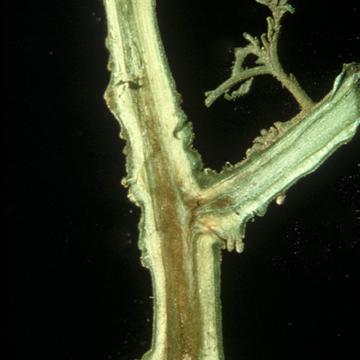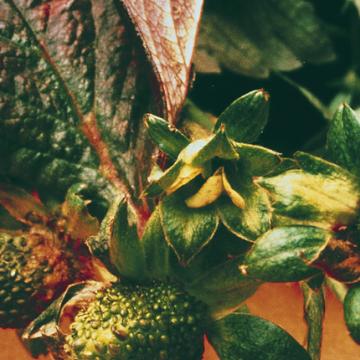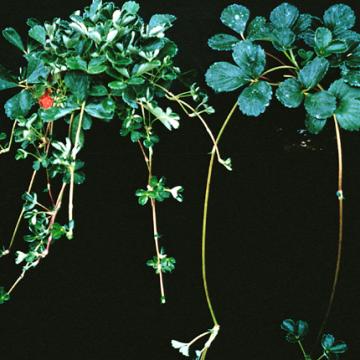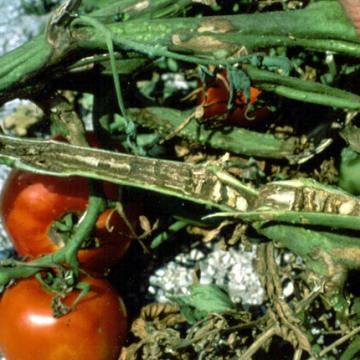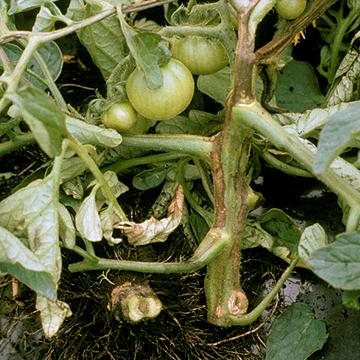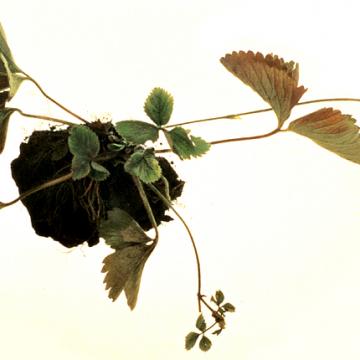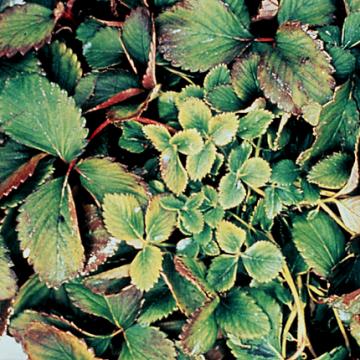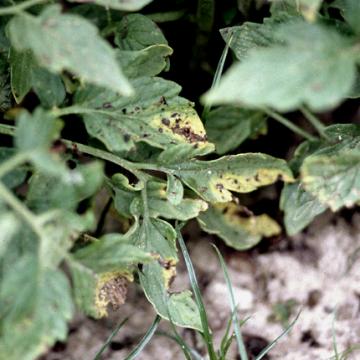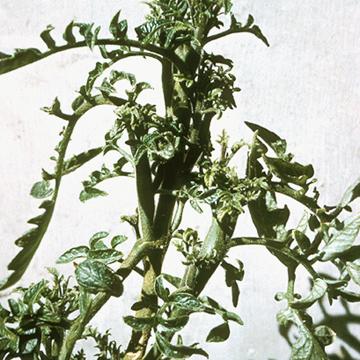DISEASE: Bacterial wilt
HOST: Tomato
Necrotic, brownish, cortical tissues. Massive infection of cortex may result in water-soaked lesions on stem surfaces.
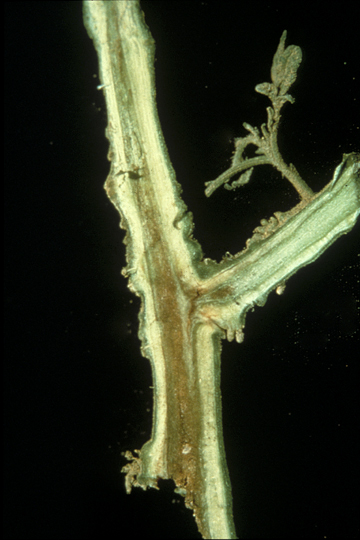
Bacterial wilt | Tomato
DISEASE: Bacterial wilt
HOST: Tomato (Lycopersicon esculentum)
PATHOGEN: Ralstonia solanacearum
PATHOGEN SYNONYM: Pseudomonas solanacearum
SOURCE: A. Hayward
DISEASE: Green petal disease
HOST: Strawberry
Diseased plant with button berries and green petals that turn red. The disease is caused by a subgroup of aster yellows.
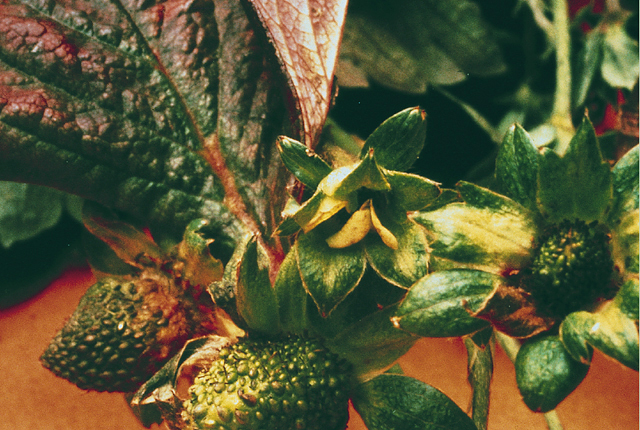
Green petal disease | Strawberry
DISEASE: Green petal disease
HOST: Strawberry (Fragaria × ananassa)
PATHOGEN: 'Candidatus Phytoplasma' sp.
PATHOGEN SYNONYM: Phytoplasma (undefined)
SOURCE: M. Clark
DISEASE: Multiplier disease
HOST: Strawberry
Multiplier disease causes production of numerous crowns along runners.
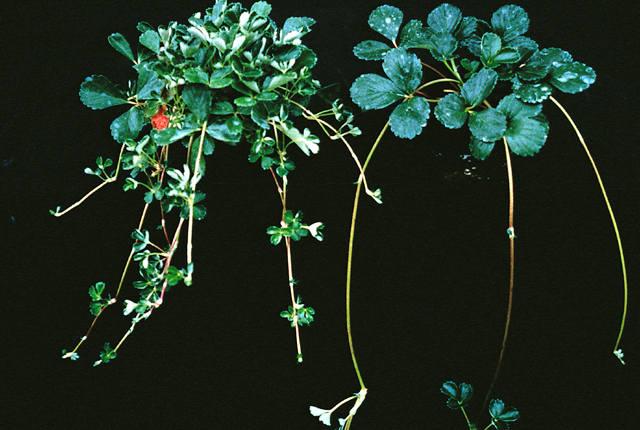
Multiplier disease | Strawberry
DISEASE: Multiplier disease
HOST: Strawberry (Fragaria × ananassa)
PATHOGEN: 'Candidatus Phytoplasma trifolii'
PATHOGEN SYNONYM: Phytoplasma Clover proliferation group
SOURCE: M. Clark
DISEASE: Pith necrosis
HOST: Tomato
Cracked, dry, hollow stems with internal necrosis.
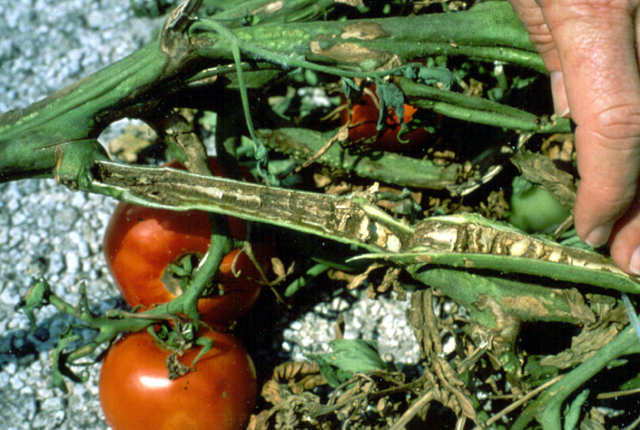
Pith necrosis | Tomato
DISEASE: Pith necrosis
HOST: Tomato (Lycopersicon esculentum)
PATHOGEN: Pseudomonas corrugata
SOURCE: A. Alvarez
DISEASE: Pith necrosis
HOST: Tomato
External necrotic stem tissues. Initial symptoms include chlorosis of young leaves. Wilting may occur when disease is severe.
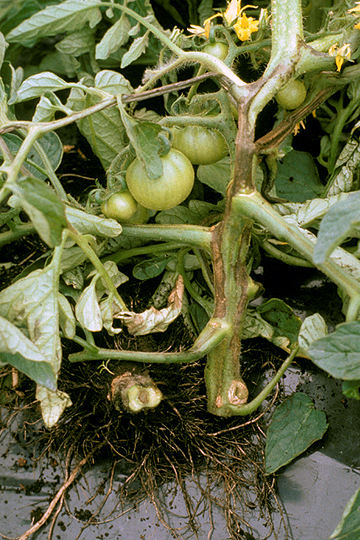
Pith necrosis | Tomato
DISEASE: Pith necrosis
HOST: Tomato (Lycopersicon esculentum)
PATHOGEN: Pseudomonas corrugata
SOURCE: K. Natsuaki, M. Goto
DISEASE: Strawberry lethal decline
HOST: Strawberry
Diseased plant with bronzing of older leaves and upward rolling or cupping of younger leaves. Leaves are chlorotic on upper surfaces and reddish or purplish on lower surfaces. In time, the entire plant dies.
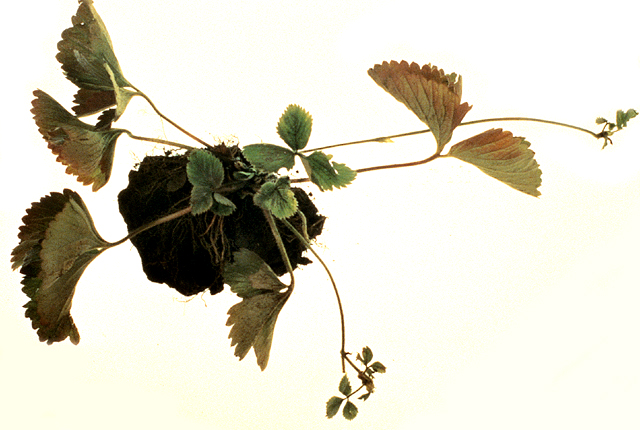
Strawberry lethal decline | Strawberry
DISEASE: Strawberry lethal decline
HOST: Strawberry (Fragaria × ananassa)
PATHOGEN: 'Candidatus Phytoplasma' sp.
PATHOGEN SYNONYM: Phytoplasma (undefined)
SOURCE: H. Schwartz
DISEASE: Strawberry yellows
HOST: Strawberry
Symptoms of disease are stunting and marginal chlorosis of younger leaves and purple or bronze pigmentation of older leaves. Infected plants usually die.
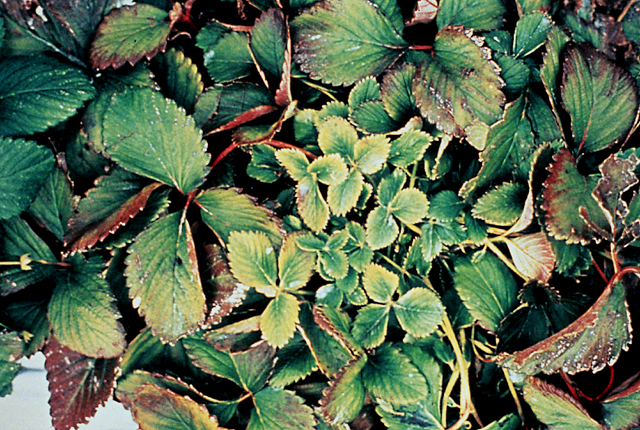
Strawberry yellows | Strawberry
DISEASE: Strawberry yellows
HOST: Strawberry (Fragaria × ananassa)
PATHOGEN: 'Candidatus Phytoplasma' sp.
PATHOGEN SYNONYM: Phytoplasma (undefined)
SOURCE: R. S. Greber
DISEASE: Syringae leaf spot
HOST: Tomato
Leaves with brown necrotic lesions and chlorotic margins. Symptoms vary greatly among cultivars. Some have black or brown lesions with bright yellow, chlorotic areas and others do not have yellowing.
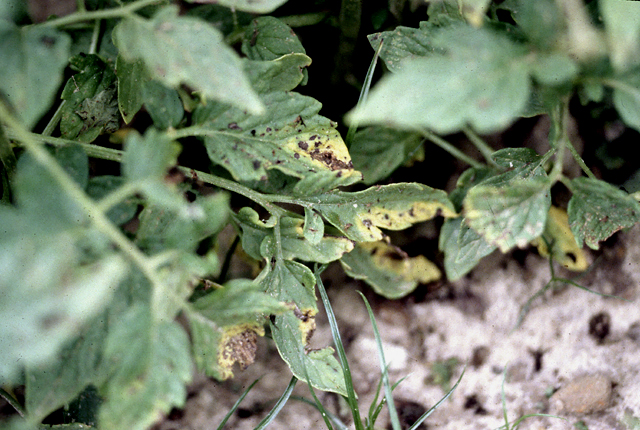
Syringae leaf spot | Tomato
DISEASE: Syringae leaf spot
HOST: Tomato (Lycopersicon esculentum)
PATHOGEN: Pseudomonas syringae pv. syringae
SOURCE: R. Gitaitis
DISEASE: Tomato big bud
HOST: Tomato
Characteristic symptoms are swollen, apical stems and stunted leaves. Apical stems are generally thickened and assume a stiff and erect growth habit. Internodes are shortened and flower buds are greatly enlarged.
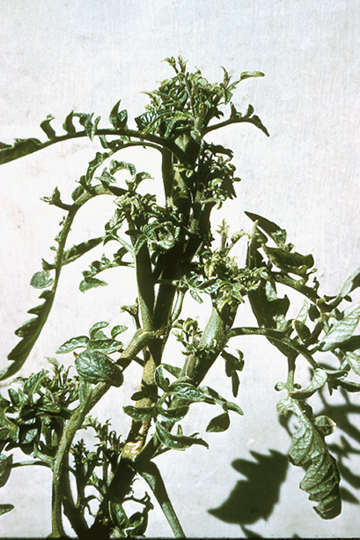
Tomato big bud | Tomato
DISEASE: Tomato big bud
HOST: Tomato (Lycopersicon esculentum)
PATHOGEN: 'Candidatus Phytoplasma asteris'
PATHOGEN SYNONYM: Phytoplasma Aster yellows group
SOURCE: D. Teakle


